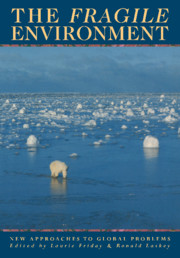1 - The changing human impact
Published online by Cambridge University Press: 03 May 2010
Summary
Introduction
Much of our knowledge of the history of human relationships with the environment has resulted from close, long-standing links between the disciplines of geography and archaeology. Traditionally, such studies have centred on a desire to explain in terms of environmental influences either the distribution of human activities in space or the changing fortunes of human groups through time. For example, Huntington and his co-workers interpreted migration and the decline of cities in Central Asia in terms of environmental changes and saw dry phases as the driving force of the Pulse of Asia (1907). The archaeologist Gordon Childe saw the adoption of domestication and cultivation as a revolutionary response to desiccation in post-glacial times. More recently, many of the great collaborative ventures in environmental archaeology have sought to place archaeological sites in their environmental context. A new discipline – Geoarchaeology – has emerged.
In this chapter, however, I wish to approach the subject from a different perspective, seeking to outline some of the ways in which prehistoric groups have caused environmental changes. I shall concentrate on the use of fire, hunting, agriculture and settlement, with particular reference to the post-glacial peoples of Britain, and also on the exploitation of minerals. My hypothesis is that the changes brought about by these activities were rather substantial, though I recognise that the impacts will have varied from area to area, according to length of human occupation, technological level and population numbers.
Human life probably first made its appearance on our planet some three or so million years ago, before the start of the Ice Age (see the timescale in the Appendix to this chapter).
- Type
- Chapter
- Information
- The Fragile EnvironmentThe Darwin College Lectures, pp. 1 - 21Publisher: Cambridge University PressPrint publication year: 1989
- 4
- Cited by

